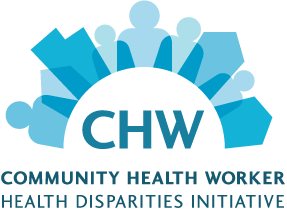2.4 Handle Barriers

In this Section
- 2.1 Recruit
- 2.2 Keep People Coming
- 2.3 Adjust Materials and Add New Ideas
- 2.4 Handle Barriers
What ideas do you have to handle barriers?
“Transportation was difficult in rural areas. So we would do our program at a church close to where people live.” —Tia Newman, Branch and Development Specialist, Big Bend Area Health Education Center in Florida
In Know What Might Make It Hard For People to Be a Part of Your Program, we talk about how important it is to plan for any barriers that might keep your heart health program from being a success. If you did this, you were probably able to keep some problems and issues from coming up. Now that you are running your program, though, you may be experiencing new barriers, or you may be dealing with the same barriers as before because they were hard to solve. You will probably find that barriers are something you will have to deal with throughout the life of your program. Tips on how to do this are included here.
Learn how to handle barriers that may come up for the following:
Helpful Handouts and Tools
Ideas to Handling Barriers When Running Your Program  (PDF, 219 KB)
(PDF, 219 KB)
The People in Your Program
Learn about common barriers that keep people from going to sessions by reviewing Decide Who to Reach. Ways to handle these barriers include
- Understanding the needs of the people in your program,
- Asking your leaders and partners for help (they may have ideas on how to handle the barriers or be able to suggest someone who might),
- Offering your program at a convenient time and place, and
- Providing rewards and incentives.
Ask the people in your program for ideas on how to handle the barriers. You may find that they can help each other or help you think of new ideas.
Examples from the Field
Community health workers at Centro San Vicente in El Paso, Texas, knew people would have a hard time attending because of work or kids, so they offered their heart health program three times during the day: in the morning, afternoon, and late evening. The morning program would attract parents who would drop off their kids at school and then be free to attend. The afternoon and late-evening programs would attract parents who worked during the day.
The Person Teaching, Your Team, and Your Organization
View the handout Ideas to Handling Barriers When Running Your Program  (PDF, 219 KB). It includes a list of common barriers along with some suggestions for handling them. Keep in mind that barriers and the best ways to handle them vary from place to place. Adapt this information to your own situation. Some barriers have no easy fixes and will require that you work closely with your leaders to handle them.
(PDF, 219 KB). It includes a list of common barriers along with some suggestions for handling them. Keep in mind that barriers and the best ways to handle them vary from place to place. Adapt this information to your own situation. Some barriers have no easy fixes and will require that you work closely with your leaders to handle them.








